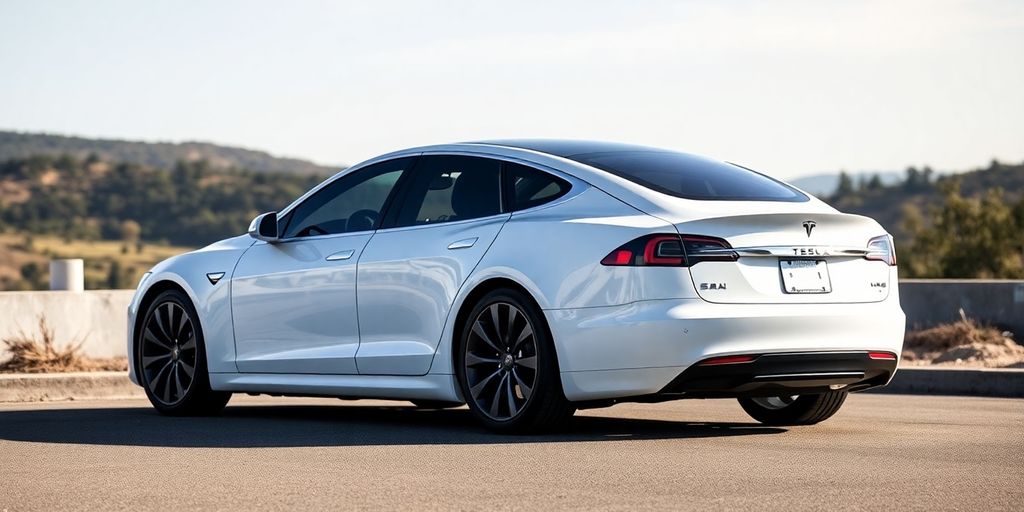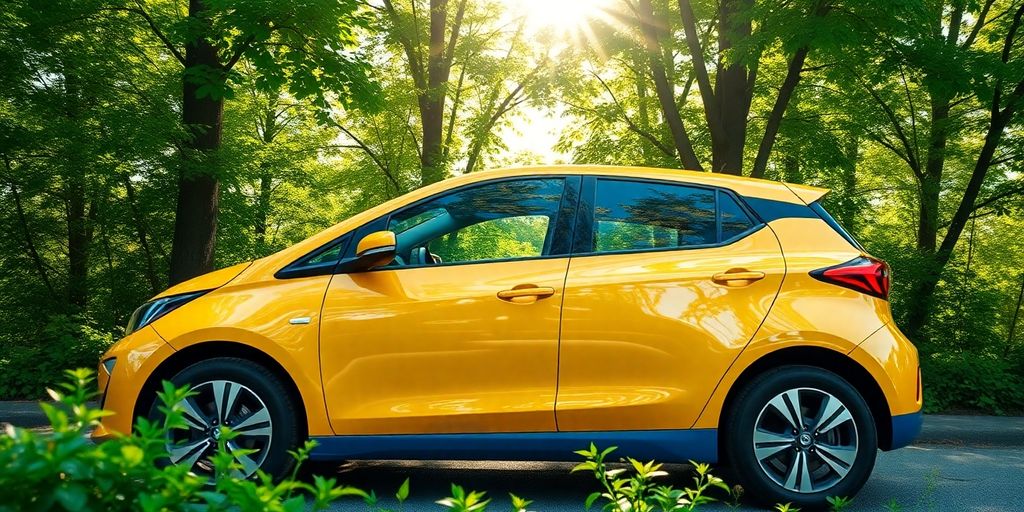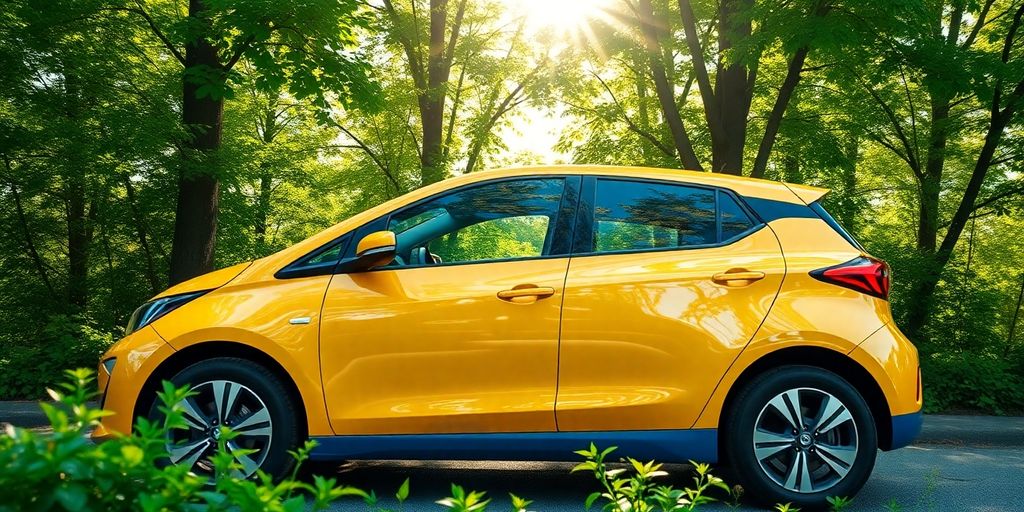Tesla Model S: How Long Can It Last?

So, you’re wondering how long a Tesla Model S can really last, huh? Well, you’re not alone. Many folks are curious about the lifespan of these electric beauties. With all the buzz around electric vehicles, especially Teslas, it’s no surprise. The Model S is known for its sleek design and impressive performance, but what about its longevity? Let’s dive into what you can expect from a Tesla Model S in terms of lifespan and how to make it last even longer.
Key Takeaways
- Tesla Model S can last between 300,000 to 500,000 miles, which is quite impressive.
- Proper maintenance and regular check-ups are crucial to extending the lifespan of your Tesla Model S.
- Driving habits, such as avoiding rapid acceleration and hard braking, can significantly impact the car’s longevity.
- Optimal charging practices, like avoiding frequent full charges, help in maintaining battery health.
- The Tesla Model S’s battery is designed to last for many years, but environmental factors like extreme temperatures can affect its performance.
Understanding the Lifespan of a Tesla Model S

Factors Influencing Longevity
When it comes to how long your Tesla Model S will last, there are a few things to think about. Charging habits play a big role. It’s best to keep the battery charged around 80% for daily use and avoid using Superchargers too much. Driving style matters too. Smooth driving is easier on the battery than speeding up and slowing down all the time. And don’t forget about temperature. Extreme hot or cold can affect battery life, even with Tesla’s fancy thermal management system.
Comparing to Traditional Vehicles
The Tesla Model S is different from traditional gas cars. While a regular car might last around 200,000 miles, a Model S can go 300,000 to 400,000 miles if you take care of it. This is partly because electric motors have fewer moving parts than combustion engines, which means less wear and tear. Plus, there’s no oil to change or exhaust system to maintain.
Real-World Mileage Expectations
In real life, how far can you expect your Model S to go? Well, many owners report their cars are still going strong after 200,000 miles. Some even reach 300,000 miles. Tesla has designed these cars to last, and with proper care, they often exceed expectations. It’s not just about the battery; the whole car is built to be durable. Just keep up with maintenance, and your Model S should last a long time.
Maximizing the Battery Life of Your Tesla Model S

Optimal Charging Practices
To keep your Tesla Model S battery in top shape, it’s crucial to adopt smart charging habits. Consistently keeping your battery charge between 20% and 90% can significantly extend its lifespan. Avoid charging to 100% unless you’re planning to drive immediately afterwards. This practice helps minimize wear on the battery cells and maintains their efficiency over time. Regular charging patterns also allow the battery management system to optimize performance and reduce stress on the battery.
Impact of Driving Habits
How you drive your Tesla can greatly affect its battery life. Smooth, steady driving is more than just a way to enjoy your ride; it helps preserve battery health. Rapid acceleration and harsh braking are best avoided if you want to keep your battery running longer. Instead, try to maintain a consistent speed and use regenerative braking when possible to recapture energy and reduce strain on the battery.
Temperature Management
Temperature plays a big role in battery performance and longevity. Extreme heat or cold can negatively impact your Tesla’s battery. In hot climates, park in the shade and avoid charging during peak temperatures. For cold weather, precondition your battery before driving to help keep it efficient. The Model S has a sophisticated thermal management system, but being mindful of the environment can further protect your battery’s health.
Taking care of your Tesla Model S battery isn’t just about following guidelines; it’s about understanding how your day-to-day actions can make a difference. With the right habits, your battery can last for hundreds of thousands of miles, providing reliable performance year after year.
Common Maintenance Tips for Extending Vehicle Life
Regular Service Intervals
Keeping up with regular service intervals is crucial for your Tesla Model S. Just like any other car, it needs routine check-ups to stay in top shape. Tesla recommends visiting their service centers every 12,500 miles or once a year, whichever comes first. During these visits, technicians will check everything from the brakes to the suspension. Regular maintenance ensures your vehicle runs smoothly and can prevent costly repairs down the line.
Battery Maintenance Guidelines
The battery is the heart of your Tesla, and taking care of it is vital. Here are a few tips to keep it healthy:
- Avoid frequent deep discharges. Try not to let the battery drop below 20%.
- Limit the use of Superchargers. They’re great for road trips but can wear down the battery if used too often.
- Keep your charging level between 20% and 80% for daily use.
Following these guidelines can help you get the most out of your battery.
Software Updates and Their Importance
Tesla frequently releases software updates, and they’re not just about adding new features. These updates can improve battery management and overall vehicle performance. Check your settings to ensure automatic updates are enabled. Staying current with software updates is a simple way to enhance your car’s longevity.
"Maintaining your Tesla Model S isn’t just about keeping it running; it’s about maximizing its lifespan and ensuring you get the most out of your investment."
For more tips on extending your car’s lifespan, consider prioritizing regular maintenance like monitoring fluids and ensuring proper tire care. Keeping your car clean inside and out also plays a role in its longevity.
Evaluating the Cost-Effectiveness of a High-Mileage Tesla Model S
Pros and Cons of Buying Used
Thinking about buying a used Tesla Model S with a lot of miles? It’s a mixed bag. On the plus side, you could save a ton of money upfront. Used models, especially those with more than 100,000 miles, often come at a much lower price. But, keep in mind that the battery might not be as spry as it once was. Test driving is a must to ensure everything’s running smoothly.
- Pros:
- Lower purchase price
- Immediate availability
- Established reliability over time
- Cons:
- Potential battery degradation
- Unknown maintenance history
- Possible higher repair costs
Assessing Battery Health
The battery is the heart of any Tesla, and assessing its health is crucial when considering a high-mileage Model S. You might be looking at a range that’s dropped to about 85-90% of what it was new, which is still pretty decent. Regular maintenance and smart charging habits by the previous owner can keep the battery in good shape. A battery health report can give you insights into its current condition.
Buying a high-mileage Tesla Model S isn’t just about snagging a deal. It’s about understanding what you’re getting into and making sure the battery can still do the job you need it to do.
Long-Term Financial Considerations
When it comes to long-term costs, a used Model S could be a smart move if you play your cards right. Maintenance costs can be lower compared to traditional cars, but remember, battery replacements are pricey. Weigh the savings on fuel and maintenance against the potential need for a new battery down the line.
| Cost Factor | Tesla Model S | Traditional Vehicle |
|---|---|---|
| Purchase Price | Lower | Higher |
| Maintenance Costs | Moderate | Higher |
| Battery Replacement | High | N/A |
For those eyeing a used Model S, don’t forget to consider how Chinese cars are shaking up the market with their affordable and advanced electric options. Who knows, they might just offer a compelling alternative in the near future.
Technological Advancements in Tesla Model S Batteries
Improvements in Battery Chemistry
Tesla’s Model S batteries have seen some serious upgrades over the years. The company uses cutting-edge lithium-ion technology, specifically NMC (nickel, manganese, cobalt) chemistry, which enhances energy density and durability. These advancements mean newer models are less prone to capacity degradation, a big deal when it comes to how long your battery will last. By refining the battery’s internal composition, Tesla has managed to improve both the range and lifespan, making the Model S a top choice for those who want an electric vehicle with staying power.
Role of Software in Battery Management
Tesla doesn’t just rely on physical improvements; their software is a game-changer too. The Battery Management System (BMS) is like the brain of the battery, optimizing performance and safety. It monitors charging patterns, temperature, and overall battery health, ensuring everything runs smoothly. Regular software updates from Tesla can even enhance battery performance, making your Model S smarter over time. This advanced cooling system and BMS significantly boost the car’s endurance and safety, making driving a Tesla not just about getting from point A to B, but doing so efficiently.
Future Innovations on the Horizon
Looking ahead, Tesla is not slowing down. They are exploring new battery chemistries and technologies to push the limits even further. Solid-state batteries, which promise higher energy density and faster charging times, are on the horizon. While these innovations are still in development, they highlight Tesla’s commitment to advancing electric vehicle technology. With these potential breakthroughs, the future of Tesla’s battery technology looks promising, and we can expect even more efficient and long-lasting batteries in upcoming models.
The evolution of Tesla’s battery technology is not just about increasing range or speed. It’s about creating a sustainable future where electric vehicles become the norm, not the exception. As Tesla continues to innovate, the Model S stands as a testament to what is possible when technology and sustainability go hand in hand.
Understanding Tesla’s Warranty and Support for Model S
Battery Warranty Details
When it comes to the Tesla Model S, the battery warranty is a big deal. It covers the battery for eight years or 150,000 miles, whichever comes first, and promises that the battery won’t degrade below 70% of its original capacity during this period. This warranty also transfers if you sell the car, so the new owner gets the same coverage.
Service Center Support
Tesla’s service centers are spread out, but not everywhere. They handle everything from routine maintenance to fixing unexpected issues. The catch? Sometimes, getting an appointment can take a while, and parts might not always be available right away. Tesla’s mobile service is a plus, though, bringing repairs to your driveway for certain fixes.
Customer Experiences and Testimonials
Drivers have mixed feelings about Tesla’s customer service. While some appreciate the convenience of mobile service and the overall low maintenance, others find the cost of repairs high and the availability of parts limited. It’s not uncommon to hear about long wait times for service appointments. Despite these hiccups, many owners love their Model S for its performance and reliability, even if customer support isn’t always up to par.
"Owning a Tesla Model S is like being part of a futuristic club. The car’s tech is amazing, but when something goes wrong, getting it fixed can be a bit of a hassle."
Conclusion
So, how long can a Tesla Model S really last? Well, it seems like if you treat it right, this car can go the distance. We’re talking up to 500,000 miles, which is pretty wild. But remember, it’s not just about the miles. Keeping up with regular maintenance and being mindful of how you drive and charge it makes a big difference. Sure, the battery might lose some juice over time, but with Tesla’s tech, it’s built to last. So, if you’re thinking about getting one or already have one, just take care of it, and it’ll take care of you for years to come.
Frequently Asked Questions
How long can a Tesla Model S last?
A Tesla Model S can last between 300,000 to 500,000 miles, which is about 20 years, depending on how it’s driven and maintained.
What should I avoid to make my Tesla Model S last longer?
To make your Tesla Model S last longer, avoid deep discharges, frequent fast charging, and extreme temperatures.
Is it okay to buy a used Tesla Model S with over 100,000 miles?
Yes, it’s okay to buy a used Tesla Model S with over 100,000 miles if it has been well cared for. Always take it for a test drive first.
How often should I service my Tesla Model S?
You should service your Tesla Model S every 50,000 miles or every 4 years to keep it running smoothly.
What is the battery warranty for a Tesla Model S?
Tesla offers an 8-year, unlimited mileage warranty for the Model S battery.
What are the best charging habits for a Tesla Model S?
For best results, keep your Tesla Model S battery charged to around 80% and avoid frequent fast charging.








Responses